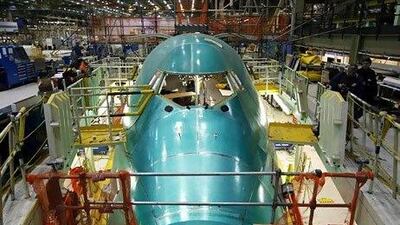For millennia, the human race has relied on one powerful skill to build the world we now see around us - the ability to innovate.
From the discovery of fire to the invention of the spacecraft, innovation has driven us to achieve the unachievable.
Whether you call it ibtikar, as it is known in the Arab world, or "innovation", it all begins with a passion for excellence and an ability to bring together the collective experience and insight of the brightest minds.
Innovation thrives in an environment in which problems are perceived as opportunities and non-linear thinking is encouraged. It needs to be driven not merely by ambition, but by a vision and a culture of openness to sharing ideas and best practice.
Innovation also needs to be backed by resources and a willingness to invest in anticipating and creating the future. Collaboration and the willingness to transfer knowledge and expertise are essential elements in the innovation process.
This aspect is often reliant on the ability of governments, industry and academia to work together and, importantly, learn from each other. While governments conduct research, set policies and devote resources that drive economic growth and contribute to economic and political stability, industry experts and academics can contribute their knowledge and expertise.
By working hand in hand, industry, government and academia can create a culture of innovation.
It is evident that the Middle East's visionary leaders have recognised this and have long realised that the rapid pace of change in the world in which we live requires continuous innovation.
Today, under their guidance, that legacy of innovation is plainly visible around the region. From the development of knowledge-based economies to the creation of regional centres for research and development excellence, the Middle East is not merely driven by ambition, but by a desire to innovate.
The Middle East is no stranger to the concept of innovation: while Europe was still in the Dark Ages, this region enjoyed a Golden Age of science, mathematics and letters.
In fact many of the principles of flight can be attributed to advances that have come from Arab scientists and mathematicians. These scientific principles now form the foundation for an entire industry, which is easily one of the most innovative on earth and has been built almost entirely on great ideas.
Looking back at the past 50 years at Boeing, we have made technological leaps from the 707 to the 787, from aluminium to composite, from a fuselage built from multiple sections to a one-piece fuselage skin, from window shades to dimmable windows. That's a tremendous amount of progress, but no one in our industry is sitting down. Even after you design and build a plane, you must continue to build innovation into your product and look at innovation as a continuum.
One of the challenges innovators face is balancing their work with the ability to produce, and whenever you are working on the kinds of products we work on, there is inherent risk.
Sometimes, this means that innovators may, in their passion to innovate, reach too far, too fast - and that can be a double-edged sword. However, we learn from our mistakes and despite the challenges we cannot allow conservatism to creep into our decisions. After all, the human race owes much to innovation.
And innovation doesn't end once you have achieved the unachievable. I would go so far as to say that innovation is more than simply responding to current or knowable needs. It is about envisioning the future then creating that future. With that approach, imagine where we will be tomorrow.
Imagine a world 50 years from now where most aviation fuel is made from plants that will be cleaner and will perform as well as or better than anything on the market today.
Five decades on, we could be on our 10th generation of advanced composites, which will be lighter, stronger and "smart" too - able to morph in-flight to optimise performance.
The possibilities are endless, but innovation will make them a reality. That is the power of innovation.
A Martin Bentrott is the vice president, sales, for the Middle East, Central Asia and Russia at Boeing Commercial Airplanes

